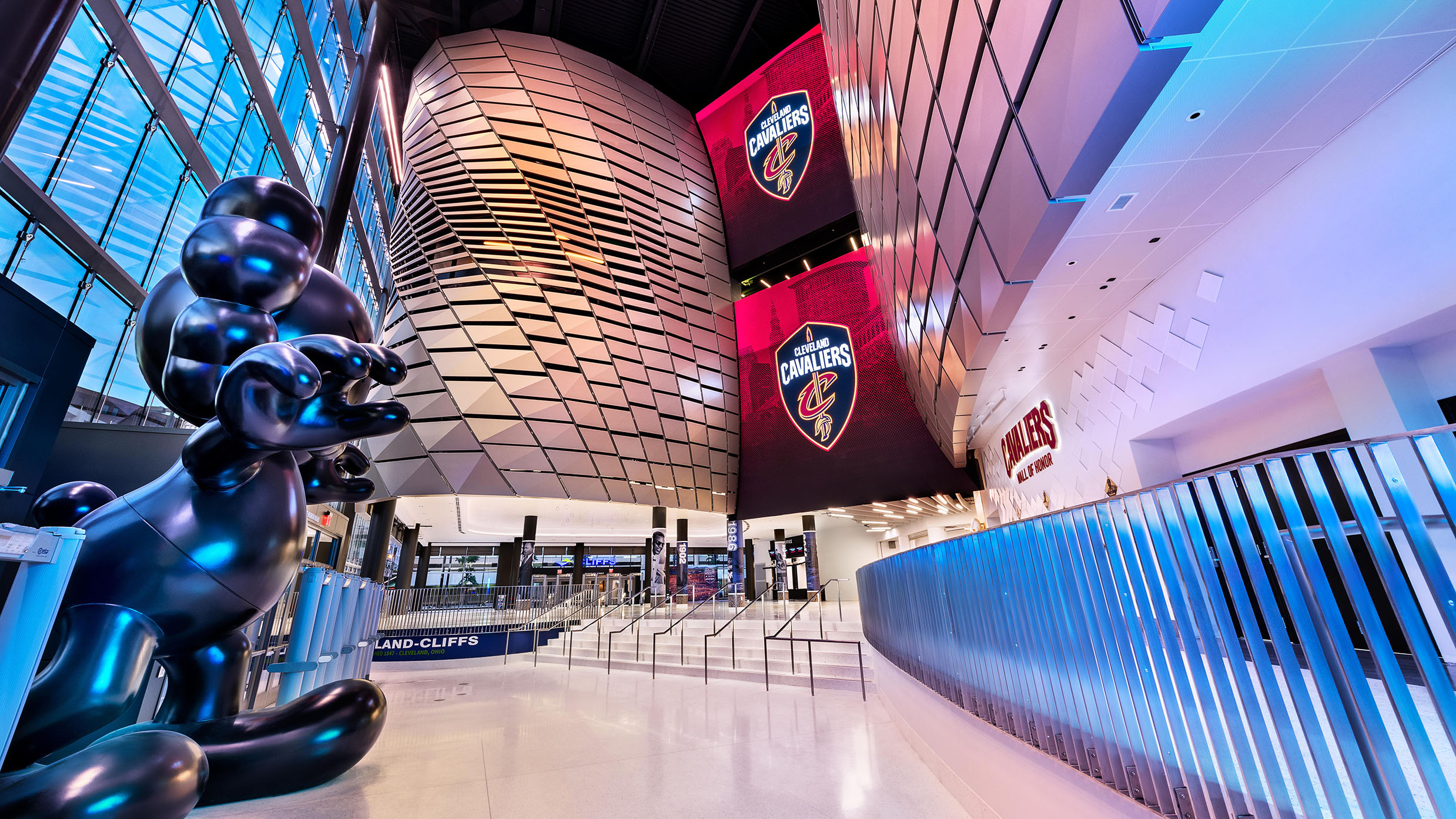With the pandemic changing the way spectators engage with in-person events, and venues wanting a continued return to in-person attendance, integrators have been working closely with stadiums and arenas across the country on technology integration that increases interactivity, making spectators a more active part of the overall experience.

“After a year’s absence from sporting venues, fans are coming back in droves. But to keep them back, we’ve learned we have to create really remarkable experiences that engage fans,” said George Linardos, chief executive officer for event AV service provider ANC. “Whether it’s interactive elements, elements that drive ROI, or elements that help our clients provide 365-day use both inside and outside the venue, we’re getting requests for all of it. It’s not just about static scoreboards anymore.”

Moving away from one-way events, venues want to harness the energy and emotions of the crowd to help shape the competitive landscape. Rodrigo Ordonez, principal at AV consulting firm K2, said, “Fans have always used their noise level to influence a game. A few years ago, stadiums started using technology in the way of microphones, processing, and graphics on the big screens to show a live indicator of the current noise level generated by the audience. This is just a simple thing, but it distinguishes the stadium experience from the remote experience.”
With more people currently watching live events on television screens than in person, venues have to make the case that the in-person experience is worth getting off your couch or leaving your favorite sports bar for. “The AV experience can contribute greatly to that,” Ordonez said.
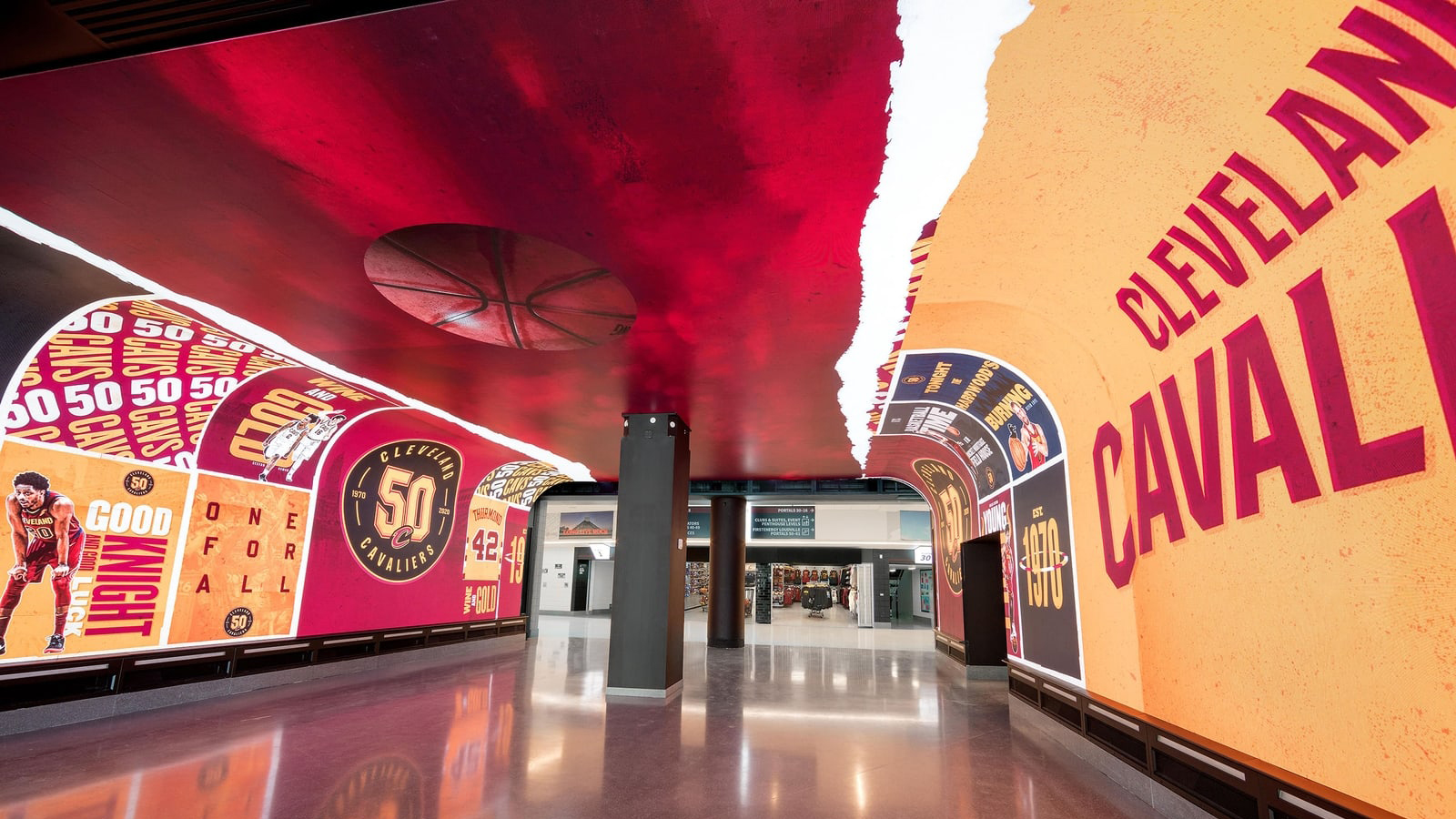
With this in mind, many venues are choosing to invest in stadium-wide integrated control and immersive sound. Depending on the event, these systems can provide concert-quality sound with low-frequency impact or ensure the back-of-house patrons experience the event no differently than those in the front row.

Chris Sullivan, vice president of business development at sports and live events company Diversified, said, “These days, loudspeaker systems from the touring side of the industry are more frequently in consideration than more traditional installed sound products.” These products offer venues increased flexibility and more inclusive capabilities.
A Feast for the Eyes

Digital signage technology is also advancing rapidly in the marketplace and changing the possibilities for interaction. Chris Mascatello, executive vice president at ANC, said, “We’re seeing ultra-fine-pitch LED, thin LED, and highly flexible LED, so we’re able to design and deliver custom creative solutions like the Power Portal at Rocket Mortgage FieldHouse in Cleveland, OH. We’re also really excited to help bring the first and only fully transparent media glass to the United States, GLAAM Media Glass, which will really revolutionize sports façades for a much more interactive, engaging experience.”
Mascatello says clear glass façades built with GLAAM Media Glass can be controlled by a user’s smartphone, enabling interactivity on art pieces as expansive as the one installed on the exterior of a New York high rise. Mobile interactivity provides each spectator with the opportunity for a unique event experience while also limiting physical touch points throughout the venue, and Mascatello believes it will be deployed more frequently in the coming years.
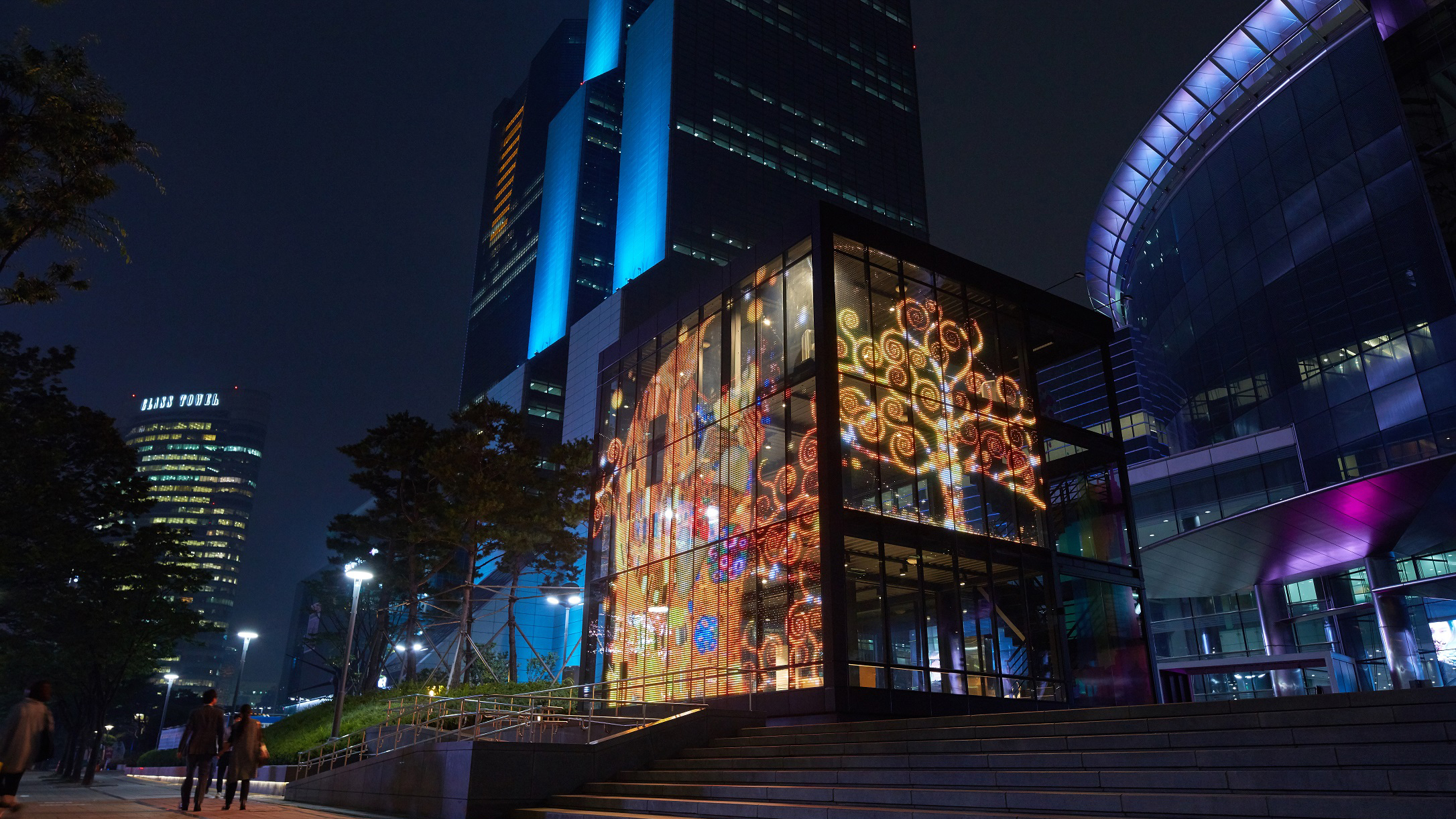
Networked Experiences
Unified IPTV systems offer a means of interacting with fans at every stage of the event experience. Implemented over a converged network, information about parking, seating, concessions, weather, safety, and traffic can easily be shared using in-venue digital signage including wayfinding and menu displays. The system also provides a unique opportunity to share sports news and updates, including in-game and out-of-game scoring, statistics, standings, and replay. This level of interaction encourages attendees to view the venue as not only a place to experience live sports, but as the go-to location for fan engagement.
[ The Latest in High-End LED Displays ]
Venues are converting to SMPTE ST 2110, a suite of standards that specifies transmission of audio and video over IP for real-time production, playout, and other professional media applications. SMPTE ST 2110 allows venues to manage their digital assets, including audio, video, and data, over an IP network, helping to control quality and offer increased flexibility.
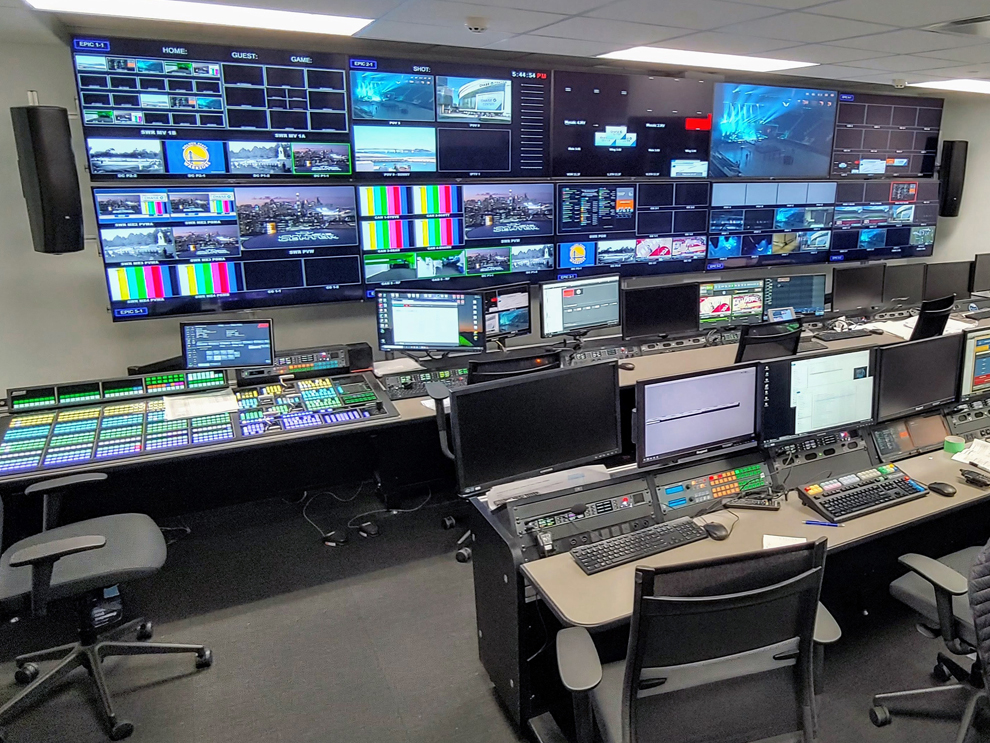
Sullivan commented, “Most new builds are embracing the new standard. While some retrofits are moving to IP, others are staying baseband. There is no right or wrong decision and many factors go into it, including budget and long-term plans for the facility.” Diversified built and integrated one of the first video control rooms with an all-IP video infrastructure at the Chase Center, the new home of the Golden State Warriors, and the arena’s audio and video has benefited greatly from the SMPTE ST 2110 standards suite for live production bandwidth.
Revolutionizing the Sportsbook
In a May 2018 decision, the Supreme Court overturned the federal ban on sports betting. With the launch of the first in-venue sportsbook in 2020 at Capital One Arena in Washington, D.C., and with many states recently changing legislation or with bills pending, venues are looking for ways to include sports betting as part of the overall venue experience. Linardos said, “We’re working with a lot of clients on premium sports bar spaces, ensuring they can easily transition to sportsbook-type experiences when the time comes. From an AV perspective, that involves the latest technology for crisp, detailed viewing of stats, integration of content management aligned with the sports betting programs, and also creating a luxury feel akin to a Vegas-type experience.”
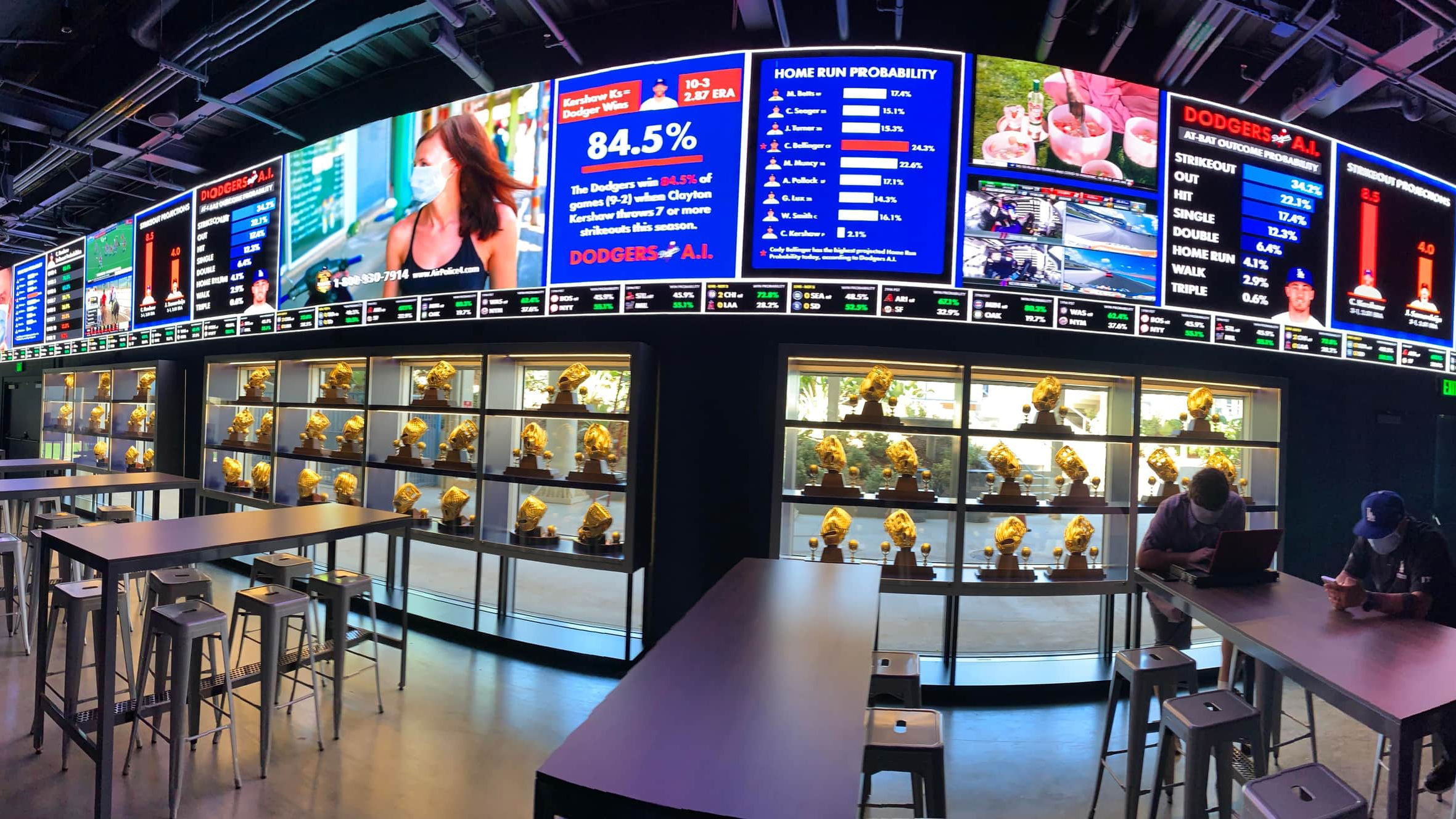
Venues are looking to integrators to help reimagine the fan experience in these and other premium spaces to help them compete with the comforts of the at-home TV experience. “We’re getting really creative in our content integration services to create interactive and memorable experiences for the spaces we’re designing,” said Mascatello.
Creativity on a Budget
With venues dealing with tight technology budgets, K2’s Ordonez says cost is still the greatest limiting factor for technology integration within venues. Many are unable to find a satisfactory balance between what they want and what they can afford to install to increase engagement. Those who blow the budget on the large physical components of their AV networks, including loudspeakers and video displays, find they are left with very little to put toward creative.
“The main need we see is for creative options to add points of engagement within the budgets of our clients. For example, for school stadium/arena environments, there is a big need to provide a better experience for viewers at home who are streaming the events. But again, budgets are limited,” said Ordonez.
[ Samsung Reveals The Infinity Screen at L.A.'s SoFi Stadium ]
Diversified’s Sullivan noted that infrastructure upgrades (both data and broadcast) need to be prioritized by venues in order to support these new systems. Delaying the upgrade of underlying systems will only cause a hold-up when they want to install a new AV technology.
On the other hand, ANC is finding that its clients have an appetite for bigger and better, hoping to set themselves apart by deploying unique and engaging center-hung scoreboards. “Unique configurations, ultra-high definition, and content management integration are really helping us to create highly custom experiences depending on client desires,” said Mascatello.
Ordonez finds it particularly exciting that advancements at the larger venues are slowly trickling down to smaller ones as the technology becomes more affordable, encouraging all venues to look at technology as an integral part of the experience rather than just a luxury. “The larger venues used by the large professional leagues will of course always drive the technology developments, but smaller venues are finding creative ways to use AV to provide a more intimate fan experience. We see this in some of the high school stadiums and arenas where the client’s requests are not only driven by intelligibility, but by maximizing the fan experience,” said Ordonez.
Click here to read more stories from the October 2021 issue of SCN.
Related Stories
Stadium and Arena AV Experts Deliver Creative Solutions During the Pandemic • To keep the athletes’ morale and fan excitement high, technologists and broadcasters are turning to artificial crowd noise, virtual fan walls, remote attendees, interactive software, and creative audiovisual solutions.
How AVoIP Is Shaping Live Venue Experiences • In order to fill the seats at stadiums when they eventually reopen, venues need to step up their engagement to compete. Joe Walsh of VITEC and Seth Koch of Daktronics share their takes on the many possibilities that AV over IP offers to enhance the fan experience.
Video Walls: An Evolving Landscape • Bigger, brighter, and blending better into their environments, we examine how video walls are transforming the way we look at everything from entertainment to critical data.
The Growing Accessibility of Large-Scale Video Walls • Video walls are shining stars in the evolving technology landscape that rely heavily on innovation to stand out.
Flexibility at Forefront as Stadiums, Arenas Welcome Back Fans • Modular staging and seating solutions allow venues to meet COVID-19 health and safety regulations. As today’s stadiums and arenas look to maximize use and revenue, demountable staging systems are proving a wise investment by providing the versatility to turn any venue into a multipurpose facility.
